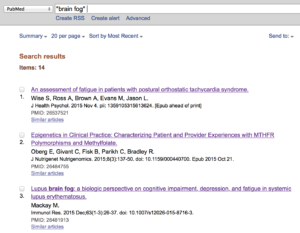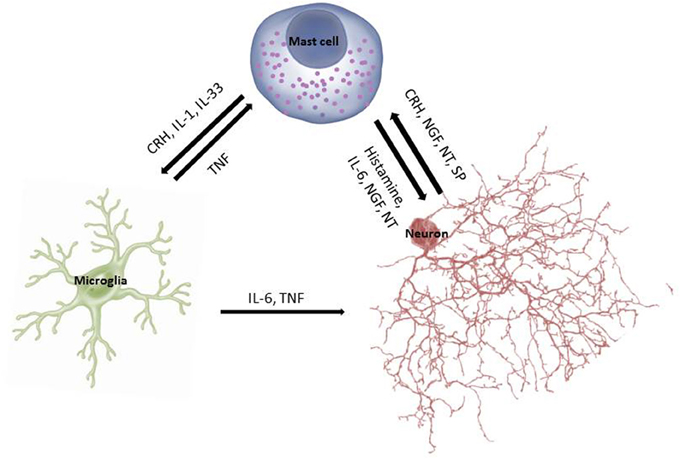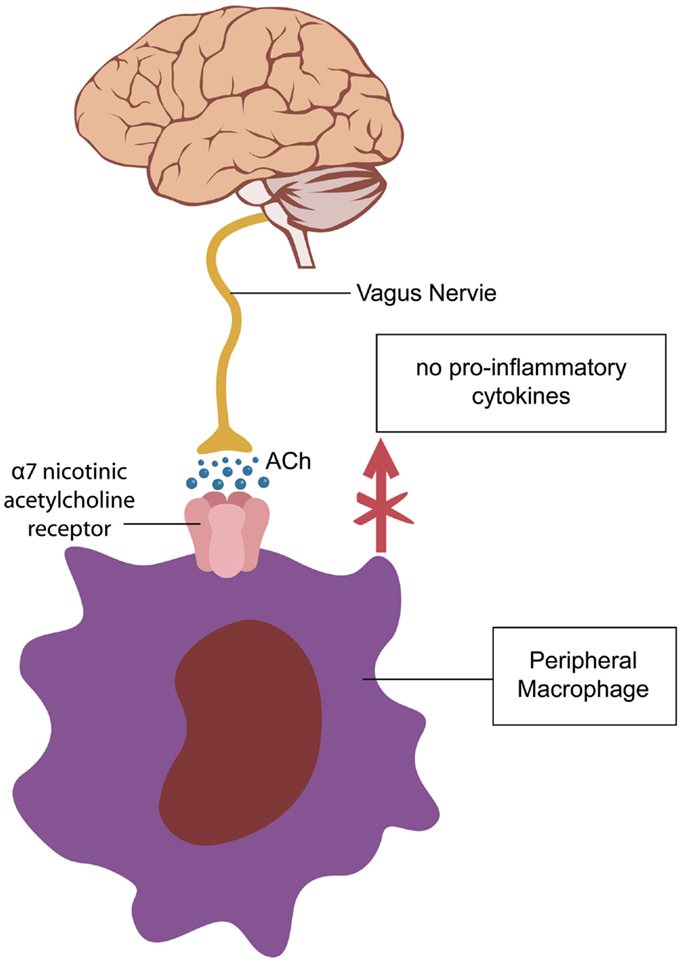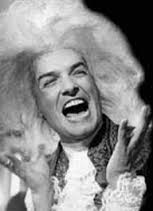IBUDILAST (MN-166) + GALANTAMINE
“For now we see through a glass, darkly; but then…” -King James Bible

Simple Summary:
Brain fog is caused by excessive inflammation. R
The Brain Fog Two Step:
Step 1: activate the “cholinergic anti-inflammatory pathway” (inhibit peripheral/systemic/body inflammation) with galantamine. (R)
Step 2: reduce microglial activation (inhibit central/brain inflammation) with ibudilast powder or ibudilast solution. (R)
Methodology
1. Searched pubmed for specific phrase “brain fog”
2. Analyzed all 14 results
3. 13 out of 14 results were related to brain fog: 12 journal articles, 1 popular article

4. Read full texts of all 13 articles and countless related journal articles
5. Results: Read on! =)
What is brain fog?
Brain fog is a non-scientific term describing a set of symptoms including forgetfulness, impaired thinking, difficulty focusing, cloudiness, mental fatigue, spaciness, etc. R
Is brain fog purely subjective?
No. Some patients reporting the symptoms of brain fog have measurable cognitive deficits in working memory, speed/efficiency of processing, reaction time, attention, and concentration. R
Although there are MANY possible causes (which I will discuss in detail in future posts), the number one culprit is most likely 1) excessive mast cell/glial cell activation which 2) increases inflammation which 3) causes excessive histamine release in the hypothalamus which 4) activates histamine H3 autoinhibitory receptors which 5) causes brain fog. R
Check out this diagram to see how mast cells, glial cells, and neurons communicate with each other through interleukins, TNF, histamine, etc. (the mast-glial-neuronal axis).

Mast sails? Why you talkin’ about boats?
Brain mast cells (just ignore the idiot that wrote that heading!) are the ‘first responders’ of the immune system to central nervous system (CNS) injury (before microglia). R
They are located near blood vessels and secrete cytokines in response to injury thereby activating microglia. R

Preventing mast cell activation prevents microglia activation and alleviates neuroinflammation. R
What are microglia?
Microglia are the primary immune cells of the CNS (R) and, “respond rapidly to injury, infection, and inflammation by releasing cytokines.” R
They travel freely throughout the brain, constantly surveil axons, dendrites, and synapses, and rapidly change shape in response to insults. R
They can assume either a pro-inflammatory (M1) or anti-inflammatory (M2) phenotype. R

So, that’s great and all but what can we do about all this scientific jargon-laden “mast/glial-cell-inflammation” business?
You’ve got questions, I’ve got…galantamine.
How can I stop inflammation?
The number one way to stop inflammation dead in its tracks is by activating the body’s fundamental anti-inflammatory pathway: “the cholinergic anti-inflammatory pathway.” R
A proper inflammatory response usually resolves within 48 to 72 hours and doesn’t spread throughout the body. The cholinergic anti-inflammatory pathway acts as a fundamental brake on the immune response which protects the body from damage that can occur due to excessive, systemic inflammation. R
This pathway is turned on via α7 nicotinic acetylcholine receptors (α7 nAChR) and significantly reduces peripheral inflammation. R
Here’s how it works.

Galantamine is a positive allosteric modulator of α7 nAChRs, inhibits the breakdown of acetylcholine, and activates the cholinergic anti-inflammatory pathway. R
Essentially, galantamine provides more acetylcholine for the receptors AND makes the receptors more receptive to acetylcholine.
Will activating this pathway cause immunosuppression and sickness?
Answer: No. Activating the cholinergic anti-inflammatory pathway simply changes the immune response “set-point” from a toxic to a healthy level by reducing pro-inflammatory cytokine production by 50–75%. R
I like to think of it as a volume control for inflammation. We don’t want to turn it all the way down to zero but we definitely don’t want to crank it up to 11!

How Does Inhibiting Body Inflammation Help Our Brains?
Answer: systemic inflammation causes cytokines to be released into the blood stream where they travel to the brain, directly and rapidly cross the blood brain barrier, increase neuroinflammation, and cause neurodegeneration. R, R
In fact, there are transporters at the BBB that actively transport inflammatory molecules from the periphery into the brain. R
The increase of inflammatory molecules in the brain results in what is known as “sickness behavior” (ie. anorexia, malaise, depression, decreased physical activity, etc.). R
Sounds a little like brain fog to me!
The simple theory is this: if you inhibit systemic inflammation then fewer inflammatory molecules will cross the BBB and therefore mast cell (‘first responder’) activity will decrease and therefore microglial activity will decrease (remember, mast cell activation increases microglial cell activation and vice versa (R)).
This double decrease will inhibit neuroinflammation and limit the destructive overactivation of neuroimmune cells.
Pretty cool, if you ask me.
Now that we’ve got our mast cells under control what else can we do to attenuate excessive glial cell activation?
I’m glad you asked! Otherwise, we’d be twiddling our thumbs and staring awkwardly at each other.
How do we attenuate microglia activation?
Ibudilast is a prescription antiinflammatory asthma medication that’s been used in Japan for over 20 years. R
It easily crosses the blood brain barrier (R) where it exhibits neuroprotective and antiinflammatory effects by inhibiting microglial cell activation. R
How does it do this?
There are two main mechanisms.
For Whom the Bell Tolls
The first mechanism by which ibudilast exerts its antiinflammatory effects is by inhibiting microglial toll-like receptor 4 (TLR4). R
What does this do?
Activation of the microglial TLR4 receptor causes the transcription factor NF-κB to translocate from the cytosol to the nucleus and upregulate the transcription of proinflammatory molecules. R
Here’s what it looks like.

Ibudilast is a TLR4 antagonist which blocks this receptor and prevents the production of inflammatory cytokines. R, R
But that’s not all! Let’s see what’s behind door number two.
Uninhibited
The second major mechanism by which ibudilast smothers the inflammatory blaze is through phosphodiesterase (PDE) inhibition.
Ibudilast is a non-selective PDEi which primarily inhibits PDE 4 and 10 (and to a lesser degree 3 and 11) (R) but PDE4B is where the real magic happens.
Ibudilast inhibits PDE4A, 4B, 4C and 4D with IC50 values 54, 65, 239 and 166 nM. R
PDE4B inhibition is associated with anti-inflammation while PDE4D is associated with emesis/vomiting (ie. don’t take too much or you’ll end up like this guy!). R
PDE4i reduces microglial production of proinflammatory molecules. R
Ibudilast inhibits microglial PDE which elevates intracellular cAMP, decreases TNFa release, and increases the production of anti-inflammatory IL-10. R
So, you get less pro-inflammatory molecules AND more anti-inflammatory molecules. Two for the price of one! (or $28-at-Mimaki-Pharmacy-plus-shipping (no affiliation))
And just when you thought it couldn’t get any better…it does.
We’ve Only Just Begun
Microglia not only have TLR4 receptors, they also have A7nAChR. R
A7nAChR activation prevents NF-kB translocation and subsequent inflammatory molecule production. R
So, our old friend galantamine is not only helping us dial down mast cells, it’s also helping us turn down overactive microglia.
Ibudilast + galantamine = Game on, inflammation.

Are we done yet?
Oh, hell no.
Let’s Do the Twist
The final twist in our story is so cool it would make M. Night Shyamalan see dead people.
What is this brain-bending, cognition contorting mindf#$%?
Well, activating the A7 receptor on microglia (the brain’s primary immune cell) inhibits NF-kB translocation (as previously mentioned) but it also activates the body’s master regulator of oxidant defense: Nrf2. R

Nrf2 is a transcription factor that upregulates over 500 genes related to cellular protection. R
Jaw meet floor.
Check out this vision of beauty.

Therefore, we are simultaneously targeting the master regulator of inflammation AND the master regulator of oxidative stress. R
We have now attained double master status.
Game. Set. Match. Brain fog.
Regulators! Mount Up.
To sum up.
We have now become Master and Commander of two master regulators (inflammation AND oxidative stress) AND of our primary neuroimmune cells (microglia) that make up 10 to 15% of the cells in our entire brain! R
We simultaneously reduced inflammation in the body AND the brain and lifted the fog of forgetfulness, fatigue, and frustration.
What you do with that power is up to you.
I’d suggest this.
Until next time!
-LF Out.
Please like (if you liked it!), comment (whether you liked it or not), and share (everybody loves a giver)!
My Dosing:
1. Galantamine 7mg/2x per day (with food). Once when I wake up and once halfway through the day.
2. Ibudilast Powder or Ibudilast Solution 10mg/2x per day (with or without food). Once when I wake up and once halfway through the day.
Cholinergic Anti-Inflammatory Pathway Activators
Galantamine Powder (R)
Galantamine Capsules
CDP Choline Capsules (R)
CDP Choline Powder
AlphaGPC Capsules
AlphaGPC Powder (theoretical, but not a big stretch)
Nicotine Lozenge (R)
Nicotine Gum
ALCAR Capsules (R)
ALCAR Powder
Acetyl L-Carnitine (ALCAR) provides acetyl groups for acetylcholine synthesis and stimulates acetylcholine creation.
GTS-21 (R)
I have not tried this
EVP-6124 (R)
I have not tried this
Microglia Inhibitors
Ibudilast Powder, Ibudilast Solution, or Ibudilast Powder (R)
Lithium Orotate (Swanson) (R) study used lithium chloride (not orotate)
Lithium Orotate (NCI) (R)
Galantamine + Nicotine (R)
Galantamine + Memantine (R)
Huperzine A + Memantine (R)
Intranasal Insulin (R)
See this post for how to buy intranasal insulin legally over the counter without a prescription and make it at home for $25.
LLLT (96 LED) (R), (R)
LLLT (48 LED + Adapter)
See this post for more info on how low level laser therapy (LLLT) works.
Curcumin (NOW Brand) (R)
Curcumin (Nutrivene)
Phosphatidylserine + Curcumin (R)
Mast Cell Inhibitors
Neuroprotek/Liopsomal Luteolin (R), (R) I have not tried this personally and can’t vouch for its effectiveness. Just sharing info. =)
Palmitoylethanolamide (PEA) (R)
Palmitoylethanolamide (PeaPlex) have not tried yet
Full Disclosure: this site contains affiliate links. The products cost exactly the same for you and the small percentage I get from sales allows me to research, write, experiment on myself, and produce the best content I possibly can for you. Your support is greatly appreciated!

43 Comments
Leave your reply.